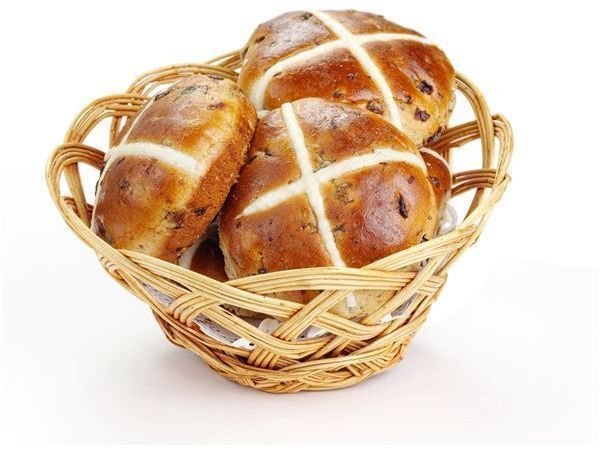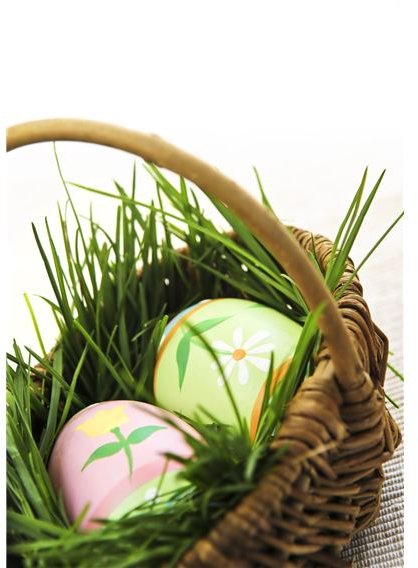Easter Traditions & Symbols: A History of this Religious Holiday
Easter Sunday and Its Season
Christians will fill churches and cathedrals in record numbers on Easter Sunday. That day, the resurrection of Jesus Christ is the central moment and the ultimate manifestation of their faith. Two thousand-plus years ago, Jesus is believed to have been the son of God. Christmas marks the birth of Jesus Christ, and Easter rejoices in his resurrection from the dead. Since this event coincides with the advent of spring, and we know that the spring occurs around March 20, Easter is always the first Sunday following the full moon or after the spring equinox, so it is called the movable feast.
**
The Build-up to Easter
Lent lasts for 40 days (not counting Sundays) and culminates in Easter. Those in the Catholic faith generally “give up” something for lent—a type of food perhaps or abstain from eating meat—and there are several special days leading up to Easter such as the first day, Ash Wednesday, when people have a cross marked on their forehead with ashes, to symbolize the sorrow of their sins.
This is followed by Palm Sunday where everyone attending church goes home with a palm frond and that is meant to replicate the palms which were spread on the street when Jesus walked into town just before his death. In the Catholic faith these same blessed palms are the ones burned to provide ashes used on Ash Wednesday.
Passover
The Easter liturgy coincides with Passover, or Pesach, and corresponds to spring and to commemorate the release of the Israelites from bondage. It also refers to the fact that, on the night he slew Egypt’s first born, God’s angel passed over the homes of the Jews.
The Jewish Passover is a week-long holiday and uses a meal called the Seder that reminds the Jewish to transmit this message to their younger generations. The story of the Exodus is recounted. Unleavened bread called matzo is taken along with bitter herbs to represent captivity, and followed by roasted lamb—symbolizing the sacrificial blood that was smeared on the doors to help the angel know which house was which—and finally, a mixture of apples, nuts and wine is used to symbolize the bricks the Jews made for the Pharaoh.
Maundy Thursday
This is the night to honor the Lord’s Supper. It is a Holy Communion day when historically, people bathed and cleaned their bodies in preparation for Easter. Typically in Communion the community church distributes the wafer, the body of Christ, and the wine, the blood of Christ. The word, Maundy comes from the Latin Mandatum or “mandate”—the first words of the Office of the Washing of the Feet, when Jesus tells his followers to do the same.
Good Friday to Holy Saturday
The day to mourn Jesus’ death is Friday. For Catholics, there is no more solemn day than this. The worshipers may attend mass and kiss a cross, symbolizing the execution of the King of the Jews. And this is a day of abstinence and perhaps partial fasting.

Hot Cross Buns
Throughout parts of Europe and America it is customary on Good Friday to eat sweet rolls with an icing marking an X on top. The custom originated in the medieval abbey of St. Albans, in England, where they gave out buns to the poor that were “crossed”—a blessing marked on the bread before baking. During medieval times, it is believed that the x served to ward off the devil.
One other belief is that the ancient Anglo-Saxons baked small wheat cakes in honor of the goddess of springtime_, Eostre_. The Christian church of course, looked for a way to give the supplicant an alternate version of that pagan ritual by marking the birth of Jesus Christ.
Holy Saturday
In some churches in European countries, all the candles in the churches are extinguished. Sometimes mirrors and portraits are covered with black cloth. That evening, Easter fires are relit and people bring charred sticks from home fires to start a “new fire” and relight the Church candles. According to the book, Holy Holidays! In Bavaria, straw figures are burned in a ritual fire called, “… the burning of Judas”, for the disciple who gave up Jesus to the Roman soldiers in the Garden of Gethsemane.
At some time on Saturday, joyful celebrations begin in countries like Spain or Mexico where they might have whistles blow, toot horns or blast fireworks.
Easter Sunrise
Many early Christians equated spring and Jesus as they had the sun. The sunrise became a symbol of resurrection. Today, thousands of people gather to watch the sunrise on Easter and in beautiful spots as they attend special church services. No matter if the word “Easter” came from the Norsemen’s Eostur, Eastar or the English Eostre, it still refers to the East and the rising sun.
The Easter Lily
The white lily has long been associated with Easter, and for good reason. The trumpet-like petals suggest the angel Gabriel’s awakening horn. Because it is started from a bulb that had been buried—it is easy to correlate to rebirth of the Savior. As is with religious significance, lilies were said to be found growing in the Garden of Gethsemane after Christ’s agony, in his final hours of sorrow. Folklore gives it special importance claiming that the beautiful white lilies sprung up where drops of Christ’s sweat fell to the ground. And the white color represents the Virgin Mary and purity and joy, hence its common name, Madonna lily. The Easter lily was imported to the U.S. in 1875 by a tourist who visited Japan and has since become a very commercial flower.

Easter Eggs
The Easter holiday is an excellent companion for the egg which has been the centerpiece of Easter customs for centuries. Of course it is an apt symbol of rebirth, but it can also stand in as a reproduction of Christ’s tomb and the casket from which he breaks forth. According to experts, the ancient Egyptians, Persians, Phoenicians and Hindus believed the world itself began with an enormous egg. Often, Greeks, Chinese and Persians gave gifts of eggs during joyous celebrations. Baskets of blessed eggs were given out in the Slavic countries, Ukraine, Poland, Russia and Czechoslovakia, where decorating eggs became an art.
Every year the White House lawn in Washington, D.C. has an Easter egg hunt on its grassy slopes where a band plays, the President resides over games, and prizes are given out to dressed up children.
Easter Bunny and the Lamb
The modern Easter bunny is of German origin. As far back as the sixteenth century drawings have been found featuring the animal as delivering eggs and, for them, the “Easter hare” is as ubiquitous as is St. Nicholas.
It’s also pre-Christian fertility lore that most likely has chosen the rabbit to represent the symbol of new life where the poor Easter lamb, in order words, is a symbol of sacrifice among the Hebrew people. Poems, hymns and stories often mention Jesus as The Lamb of God. Shepherds and farmers in ancient times believed it was good luck to see a lamb and if you looked from your window on Easter Sunday and saw a lamb, you could expect even better luck.
In the early twentieth century the song “Peter Cottontail” was written, recorded by Gene Autry, and the Easter Bunny hit has been around as a ritual ever since.
References
- The White Lily http://www.appleseeds.org/easter-lily.htm
- Tobin, Greg. Holy Holidays! The Catholic Origins of Celebration. New York: Palgrave MacMillan, 2011. Book.
- Garden of Gethsemane http://www.allaboutarchaeology.org/garden-of-gethsemane-faq.htm
- Gene Autry and the song Peter Cottontail http://heavens-gates.com/fifties/petercottontail.html
- Washing of the Feet on Holy Thursday http://www.adoremus.org/97-03_pokorsky.htm
- Definition of Spring Equinox http://www.springequinox.org/definition.html
- Barth, Edna. Lilies, Rabbits, and Painted Eggs: The Story of the Easter Symbols. New York: Houghton Mifflin Co., 1970. Book.
- St. Nicholas http://www.stnicholascenter.org/pages/germany/
